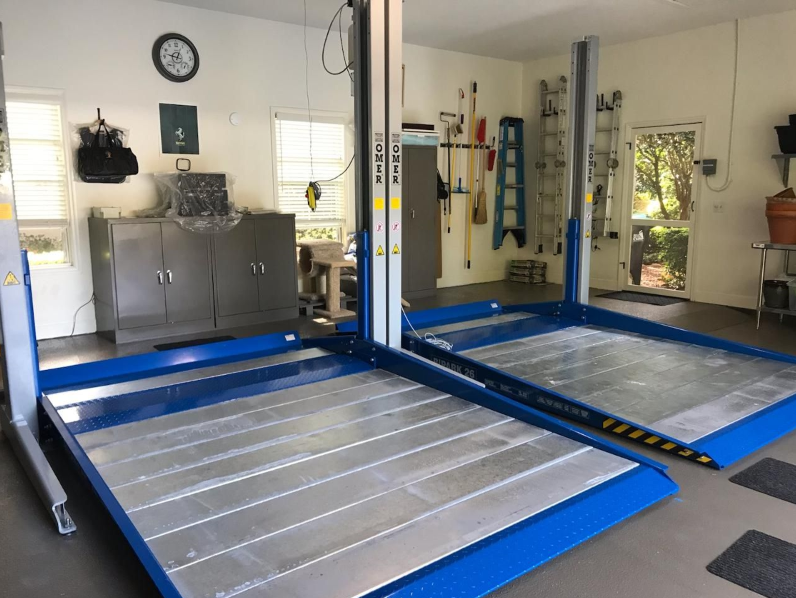CHOOSING A CAR STACKER
CHOOSING A CAR STACKER
Asking the necessary questions to choosing the correct parking system
In today’s fast-growing world, the need for car stackers is growing, and it’s all based on limited space. It could be a car-enthusiast wanting to store his Corvette in his garage over the wintertime, or a developer or architect firm looking to utilize more parking spaces in a dense, urban environment. The range of applications for car stackers can vary greatly; here are some points to consider when picking out the right piece of equipment.

Application – Is it indoor or outdoor? Is it residential or commercial? These first two questions dictate which category (and quality) of equipment you should be considering. Some manufacturers offer specific accessories for outdoor use. OMER offers a fully hot-dipped galvanized lift structure, made for longevity in a true outdoor environment.
One must also understand the use & demands of their lift. Use will vary greatly when comparing residential & commercial applications. The market for residential car stackers includes 4-post style, chain & pully operated systems. These drive systems are effective for storing a car for an extended time, but they are not intended for frequent use. In addition, cable & pully driven lifts will require inspection and maintenance/re-tensioning of the system. Some residential car lifts will also have limited locking positions. Commercial environments can include valet operated parking lots for businesses such as restaurants, condominiums or apartment complexes. The market for commercial users will most always incorporate a hydraulic system (OMER’s Bipark utilizing a twin-cylinder design) for equalization. When making your decision, consider the amount of “cycles” your car stacker will see. OMER’s Bipark incorporates a geared rack & pinion drive system, interlocking the columns and platform with a torsion bar. This design allows for intensive use in “high-cycle” environments.
Now that we’ve determined our application, we can consider the footprint & space of the equipment. Some car stackers will feature “low-clearance” models, capable of fitting into some residential garages. When considering the footprint of the equipment, also consider the heights (or range of heights) your vehicles will be. Most taller vehicles & SUV’s will require a certain height to be achieved, to park under the platform. In addition, some car stacker manufacturers will have limited locking positions available, further restricting your use of space. In addition to space available, also consider utilities available. Power requirements can vary. Typically, residential users will be considering a 1-phase, 220V product, while commercial environments are more typical with 3-phase power. 3-phase power will also increase the speed of the lift’s operation by roughly 30%. While typically reserved for the entry level equipment, some lifts will require compressed air for the locking mechanisms.
Finally, all users should consider the cost-of-ownership of their equipment. Less expensive parking systems are enticing with the initial “buy” price, but they require more maintenance & inspections.
OMER’s Bipark car stacker appeals to both the residential and commercial user. Engineered, designed & manufactured in Italy, OMER’s Bipark is everything you’d expect from a quality European-made product. Incorporating a 2-post, space maximizing design, OMER’s Bipark can increase useable space in a car enthusiasts’ garage, or in a crowded outdoor metropolitan parking lot.

